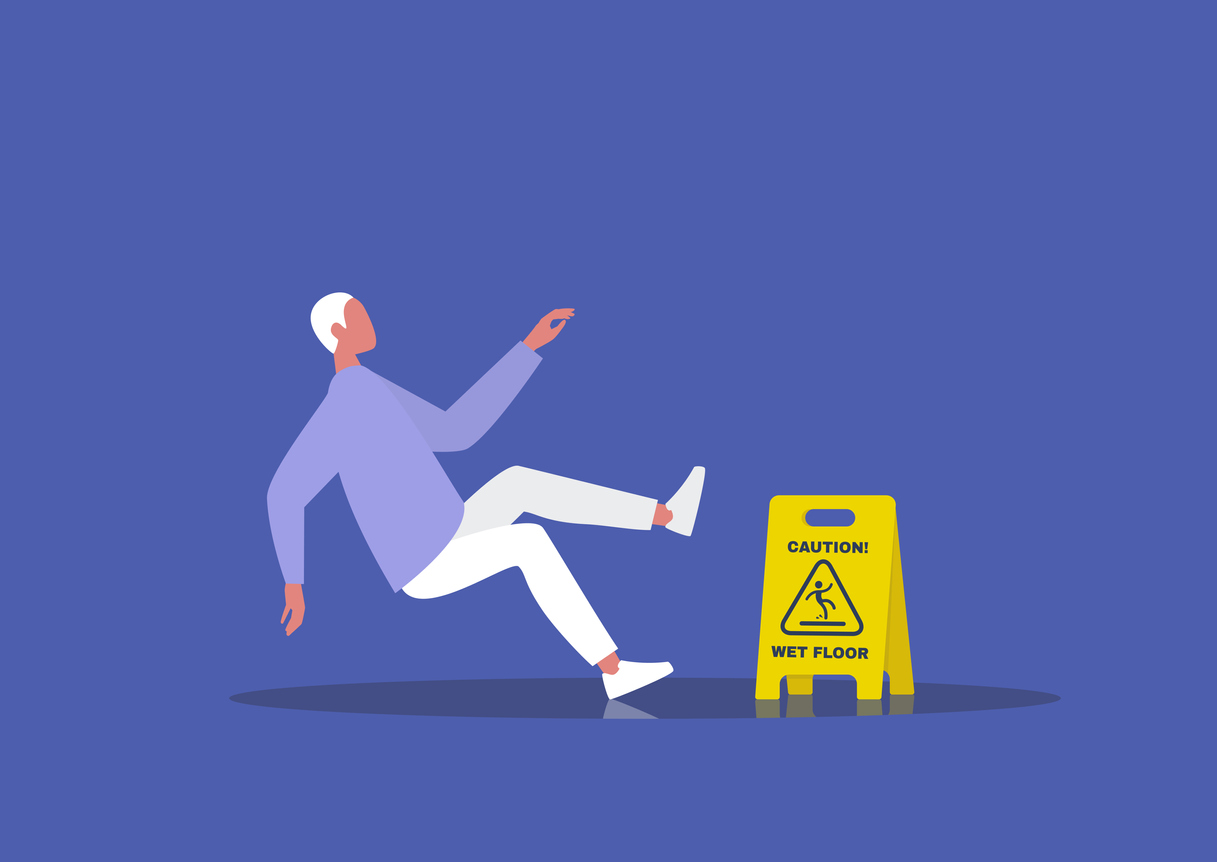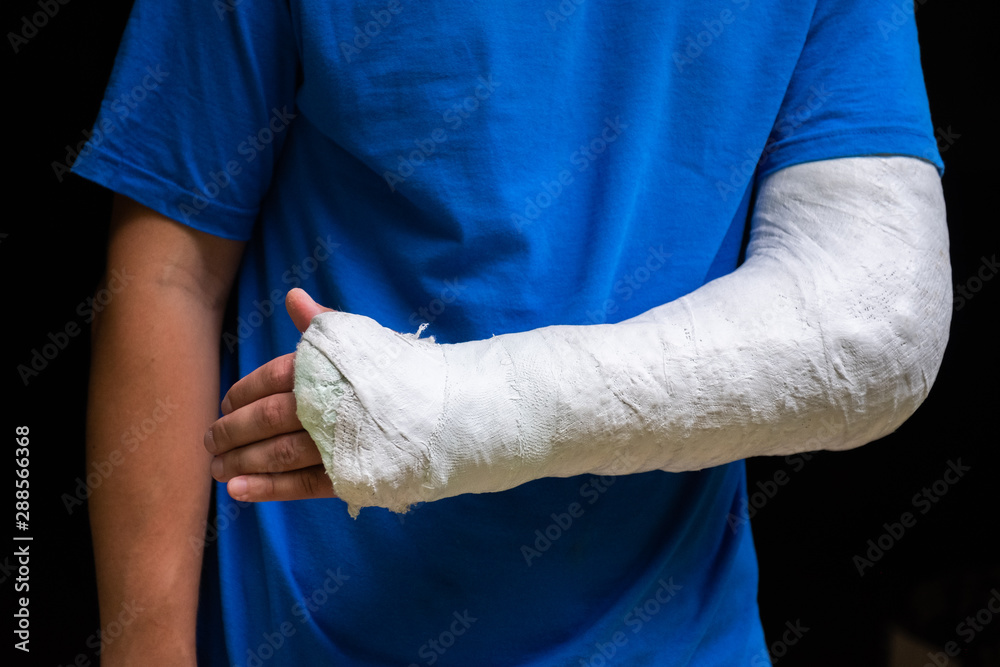At the end of each appointment, Jo Ann Battles’ cardiologist offers a “thought for the day.” Four years ago, it was this tongue-in-cheek advice: “Whatever you do, don’t fall.”
Battles didn’t think much about it. At the time, she was still going to the gym four times a week. But now, she says, “Those words haunt me.”
About a year ago, before he died, her husband fell and spent a month in the hospital. And Battles, 87, fell herself several times in the last few years, ending up in the ER three times. Two times she got stitches; the third required an MRI.
She recovered, but now the fear of falling keeps her at home much of the time. As someone who worked until age 74—and exercised regularly until about a year ago—the changes haven’t been easy.
“Falling has changed a lot of things for me,” Battles said.
Unfortunately, her situation is far from unusual. Every second of every day in the United States, according to the CDC, an older adult suffers a fall. Over the course of a year, about one in four of all older adults will fall. While most just end up with bruises, about 3 million go to an emergency department. More than 32,000 deaths annually result from falls.
“Falls are the leading cause of injury and deaths [from injuries] among people 65 and older and represent a significant public health burden,” according to Kartik Prabhakaran, MD, section chief of trauma and acute care surgery at Westchester Medical Center Health Network in Valhalla, NY. “And when older people fall, they are at risk for falling again.”
As you grow older, ground-level falls are more likely to cause significant injuries.
Many age-related factors contribute to older adults’ tendency to fall. People lose muscle mass as they age. Reflexes are slower. Balance becomes impaired. Medications, or combinations of medication, can cause dizziness. Conditions like Parkinson’s or orthostasis (a sudden drop in blood pressure when standing) can trigger falls. Even vision loss and hearing loss can contribute to the risk.
When they do fall, older adults are more likely to become injured, according to Megan Sorich, DO, a surgeon who specializes in orthopedic geriatric trauma at UT Southwestern Medical Center in Dallas. Sorich focuses on “fragility fractures,” where factors like osteoporosis contribute to a broken bone as much as the fall itself. Typically, they’re ground-level falls that would not cause significant injury in a younger person.
“Bones get more fragile as we age,” she said. “Sometimes all it takes is a minor fall to cause a fracture. And many older adults take blood thinners, which can cause bleeding or bruising.”
Falls can trigger a cascade of problems that lead to permanent disability or death, Prabhakaran added. Older adults who are hospitalized for a fall often have underlying conditions, making complications more likely and recovery more problematic. Being confined to bed, even just for a few weeks, can cause muscle loss or pneumonia.
Hip fractures—about 95 percent of which are caused by falls in older adults—are especially problematic.
“About half of people who break their hip will inherit a new mobilization device,” Sorich said. “A person using a cane will start using a walker for the rest of their life. A person using a walker will upgrade to a wheelchair for the rest of their life.”
Avoiding the ‘Long Lie’
Just as she reached to place her iPhone on its charger, Jane, 88, tumbled to the floor. She broke her hip and couldn’t get up. Even though she regularly used devices that could detect falls and call for help—an iPhone and Apple Watch—they were out of reach. Jane (not her real name) remained on the floor for hours until her worried daughter turned up.
Jane has since recovered. But even with all the advances in life-alert and fall-detection technologies, her ordeal is not that uncommon. Researchers call this a “long lie,” an instance where the older adult ends up on the floor, unable to call for help for more than an hour. It happens to up to 20 percent of older adults who fall. A long lie can traumatize an older adult, lead to dehydration, trigger a strong fear of falling and, ultimately, a loss of independence.
Technology helps when falls occur. GPS-based systems allow emergency responders to locate an individual who has fallen outside of their home. An Apple Watch can detect falls and place a 911 call.
“However, these devices can be challenging for older adults with dementia, who might not remember they are wearing a device and call for help when they need it,” said Tina Sadarangani, PhD, an assistant professor at New York University’s Rory Meyers College of Nursing.
Many older adults in under-resourced communities aren’t even aware these devices exist or can’t afford them, according to Rebekah Mulligan, MD, an internal and geriatric medicine physician at Texas Health Harris Methodist Hospital in Southlake, TX.
“The service to connect a life–alert device runs about $25 a month,” she said. “That is a lot of money for some folks.”
Preventing Falls
Prevention is the best way to avoid falls, according to Mulligan. She spends a lot of time talking about falls with medical students she teaches on their internal medicine rotations.
“Most primary care physicians do not check for gait and balance issues,” she said. “We check that at least once a year for our patients 65 and up. We also ask our patients, ‘Are you afraid of falling?’”
She encourages her patients to get vision and hearing checks and to wear closed-toe shoes that are secure on the foot (no flip-flops or slip-ons.) She reviews their medications to eliminate or reduce the dosage, where possible, of any that might cause dizziness. She also encourages patients to take up tai chi, yoga and Pilates, which can strengthen balance and help prevent falls.
Older adults can also reduce their fall risk through community-based programs like A Matter of Balance, which teaches exercises to increase strength and balance and shares tips for safe habits, like turning on a light for a night-time bathroom trip—a common time for falls.
Andrew Crocker is a gerontology and health specialist for Texas A&M AgriLife Extension Service. He leads A Matter of Balance in the Amarillo, TX, area, as well as Bingocize, a newer program that combines Bingo with exercises and health-education tips. The programs’ biggest benefits, he believes, are building confidence to break “the fall cycle,” in which a fall triggers fear of falling, leading an older adult to stay home and become more sedentary, which leads to loss of strength and reduced functionality, and further increases the risk of a fall.
“The message is, ‘You’re not a passive participant in this,’” Crocker said. “Falling is not your fate just because you’re 85. There are some things you can control about the situation.”
Some researchers are developing virtual-reality programs to train patients in how to react if they trip.
Evidence confirms the value of traditional balance training. But older adults with significant balance issues may benefit more from specialized physical therapy in a lab or clinic setting. Reactive balance training, for example, teaches patients to react to unexpected obstacles or trip hazards; research suggests it’s more effective than traditional exercises. Similarly, floor-rise training teaches techniques for getting up after a fall while also strengthening muscles.
Researchers are exploring ways to better understand why older adults fall, which will ultimately allow providers to pinpoint more specific and effective interventions, according to Adam Goodworth, PhD, professor of kinesiology at Westmont College in Santa Barbara, CA.
The neural systems that allow humans to react to a fall hazard are extraordinarily complex, involving three systems of sensory feedback: vision, vestibular (inner ear) and somatosensory (touch), which includes proprioception—the ability to judge and react to the body’s position. All of these tend to become less robust with age, Goodworth said, as does the ability to quickly react to that feedback with the right muscle movements to avoid a fall.
Researchers are developing balance-training interventions using virtual reality or augmented reality that may offer advantages over traditional balance programs.
Virtual reality could simulate what physical therapists call perturbations—unexpected obstacles or situations that can trigger a fall—allowing patients to practice and improve their ability to react.
“As the virtual technology gets more affordable, eventually people will be able to upload programs prescribed specifically for them, and use them in their own homes,” said Maury Hayashida, DPT, owner of Hayashida Physical Therapy in Santa Barbara, CA.
Improving Outcomes
When older adults do fall, 22 percent of those who end up in the hospital won’t be able to return to independent functioning. Some hospitals are looking to change that.
Sorich heads a clinic called RESTORE (Returning Seniors to Orthopedic Excellence), launched in 2021 at UT Southwestern Medical Center. RESTORE targets older patients with hip and other fragility fractures and coordinates care by a team of specialists in geriatric medicine, internal medicine, emergency medicine, anesthesiology, pain management, nutrition and physical therapy.
“The longer someone is in bed with a broken bone, the more muscle mass they lose and the less likely they are to get up and walk,” Sorich said. “They’re more likely to develop skin ulcers or pneumonia or other medical problems. We want to fix the break and get them up again as soon as we are medically able.”
At Westchester, Prabhakaran leads an initiative to help prevent recidivism—repeat falls that bring patients back to the hospital. Patients over 65 who are at Westchester due to falls undergo screening and assessment, including a medication review, gait and balance evaluation, hearing and vision screenings and a home-safety assessment. They also receive educational resources and ongoing follow-up. Hospital physicians collaborate with physical and occupational therapy to help patients address balance or strength issues that contributed to their falls.
“Our number one goal is to make sure patients are supported when they transition from the hospital to home, to make sure they have enough support in terms of daily function,” Prabhakaran said. “At the same time, we help them look for ways to reduce their risk of falling, whether it’s identifying and removing hazards in their home or choosing better footwear.”
Jo Ann Battles didn’t get that kind of follow-up at the hospital where she was treated. But she plans to ask her physician about physical therapy at her next appointment.
Meanwhile, she’s adjusting. She misses being able to head out for a walk in her neighborhood or a visit to the corner store.
She has taken some steps to stay safe. She removed most of the rugs in her home and decluttered many of her belongings. She traded her high-heeled shoes—a lifelong habit, given her 4’11” height—for sneakers. (“Now I’m looking at everybody’s belt buckle,” she jokes.) When she does leave the house, always with a family member or friend, she uses a cane.
“I just try to be as aware of my environment as I can,” she said.

Freelance writer Mary Jacobs lives in Plano, TX, and covers health and fitness, spirituality, and issues relating to older adults. She writes for the Dallas Morning News, the Senior Voice, Religion News Service and other publications; her work has been honored by the Religion Communicators Council, the Associated Church Press and the American Association of Orthopaedic Surgeons. Visit www.MaryJacobs.com for more.



